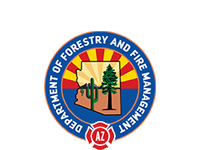Damaging Scale Insect Found on Aspen Trees in Northern Arizona
Phoenix, AZ (6/25/18) - The Arizona Department of Forestry and Fire Management and the USDA Forest Service - Forest Health Protection Group report the Oystershell Scale (OSS), in the crawler stage, has been found on Aspen trees in the Flagstaff area.
The crawler stage of OSS is the period of their development when they are the most vulnerable to treatments that can reduce their population and overall impacts.
Recently, populations of OSS have increased in northern Arizona leading to increased impacts in both urban and wildland settings. The OSS damages host trees by sucking the fluid out, which in turn, leads to branch mortality or even whole tree death.
Besides Aspen, the insect may also affect Poplars, Willow, and Lilac.
For further information on the OSS or other forest health concerns, contact DFFM Forest Health Specialist, Steve McKelvey at [email protected] or DFFM Forest Health Program Manager, John Richardson at [email protected].


